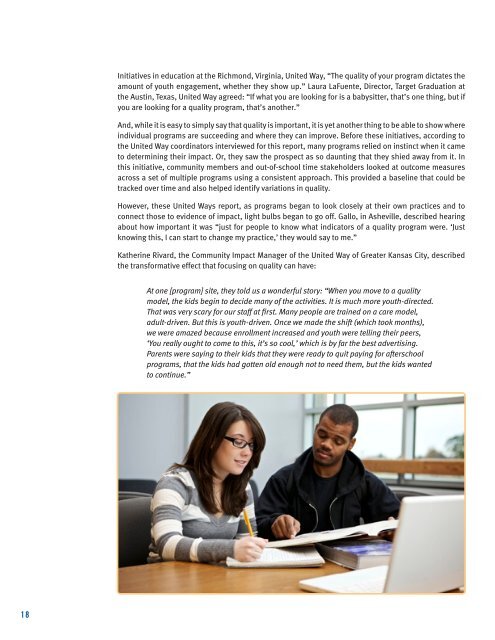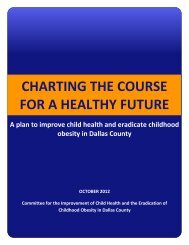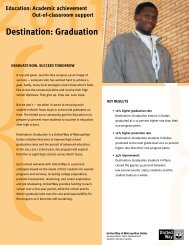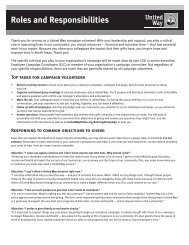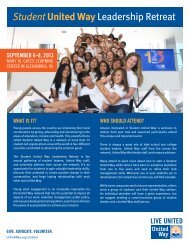out-of-school time
out-of-school time
out-of-school time
Create successful ePaper yourself
Turn your PDF publications into a flip-book with our unique Google optimized e-Paper software.
Initiatives in education at the Richmond, Virginia, United Way, “The quality <strong>of</strong> your program dictates the<br />
amount <strong>of</strong> y<strong>out</strong>h engagement, whether they show up.” Laura LaFuente, Director, Target Graduation at<br />
the Austin, Texas, United Way agreed: “If what you are looking for is a babysitter, that’s one thing, but if<br />
you are looking for a quality program, that’s another.”<br />
And, while it is easy to simply say that quality is important, it is yet another thing to be able to show where<br />
individual programs are succeeding and where they can improve. Before these initiatives, according to<br />
the United Way coordinators interviewed for this report, many programs relied on instinct when it came<br />
to determining their impact. Or, they saw the prospect as so daunting that they shied away from it. In<br />
this initiative, community members and <strong>out</strong>-<strong>of</strong>-<strong>school</strong> <strong>time</strong> stakeholders looked at <strong>out</strong>come measures<br />
across a set <strong>of</strong> multiple programs using a consistent approach. This provided a baseline that could be<br />
tracked over <strong>time</strong> and also helped identify variations in quality.<br />
However, these United Ways report, as programs began to look closely at their own practices and to<br />
connect those to evidence <strong>of</strong> impact, light bulbs began to go <strong>of</strong>f. Gallo, in Asheville, described hearing<br />
ab<strong>out</strong> how important it was “just for people to know what indicators <strong>of</strong> a quality program were. ‘Just<br />
knowing this, I can start to change my practice,’ they would say to me.”<br />
Katherine Rivard, the Community Impact Manager <strong>of</strong> the United Way <strong>of</strong> Greater Kansas City, described<br />
the transformative effect that focusing on quality can have:<br />
At one [program] site, they told us a wonderful story: “When you move to a quality<br />
model, the kids begin to decide many <strong>of</strong> the activities. It is much more y<strong>out</strong>h-directed.<br />
That was very scary for our staff at first. Many people are trained on a care model,<br />
adult-driven. But this is y<strong>out</strong>h-driven. Once we made the shift (which took months),<br />
we were amazed because enrollment increased and y<strong>out</strong>h were telling their peers,<br />
‘You really ought to come to this, it’s so cool,’ which is by far the best advertising.<br />
Parents were saying to their kids that they were ready to quit paying for after<strong>school</strong><br />
programs, that the kids had gotten old enough not to need them, but the kids wanted<br />
to continue.”<br />
18


